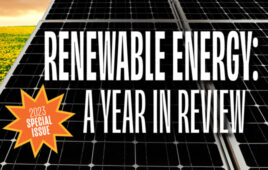We Must Face Our Reliability Responsibilities
Just how reliable is the solar industry?
With 25-year warranties increasingly the norm for different solar system components, the concerns about reliability often whispered behind closed doors grew to a dull roar at Intersolar.
A May 28 article in The New York Times headlined “Solar Industry Anxious Over Defective Panels” spurred the conversation, and it traveled up and down the aisles of the trade show like a tidal wave. Companies across all industry segments urged us to tackle the issue in our Solar Power International issue.
You ask, we report.
We at Solar Power World have written frequently about the need for performance and manufacturing standards for the industry, and the reliability issues the Times raised certainly highlights that need. In the ever-changing world of solar consolidation, can we prove the reliability of system components well enough to encourage more people to invest?
The answer is a qualified yes.
Sunny Rai, regional vice president for renewable energy for Intertek, a global testing and certification company, says he is already receiving calls from installation owners asking him to test their panels’ performance. He says they’re worried the systems aren’t working as promised.
“I was shocked,” Rai says. “Some of these installations were only two or three years old. That’s unacceptable for the long-term health of the industry.”
According to Chase Weir, CEO of Distributed Sun and co-founder of the truSolar working group, a recent study by the National Renewable Energy Laboratory (NREL) indicated that more than 20% of all modules and systems evaluated failed to produce the expected power output over time. Worse, those numbers seem to be increasing.
“Solarbuyer conducted an independent study of new module shipments and found defect rates increased from near the 5% range in September 2011 to nearly 25% by February 2012,” Weir says. “These rising defect rates in newer panels have the potential for longer-term implications for projects and failures after installation.”
But there is hope: Organizations like truSolar, Intertek, Underwriters Laboratories (UL) and NREL are working to create new tests that will simulate real-world wear more effectively, leading to better risk assessments on components and projects.
 It will take time, but this next step is critical to the continued growth of the industry, says Evelyn M. Butler, director of business development, Energy & Industrial Systems for UL and member of the truSolar Working Group.
It will take time, but this next step is critical to the continued growth of the industry, says Evelyn M. Butler, director of business development, Energy & Industrial Systems for UL and member of the truSolar Working Group.
Despite some of the challenges involved in tackling the reliability issue, I have faith. This industry is filled with incredibly smart, talented and ingenious people who are the backbone of this innovative business of ours. We will get there if we work together.





Tell Us What You Think!